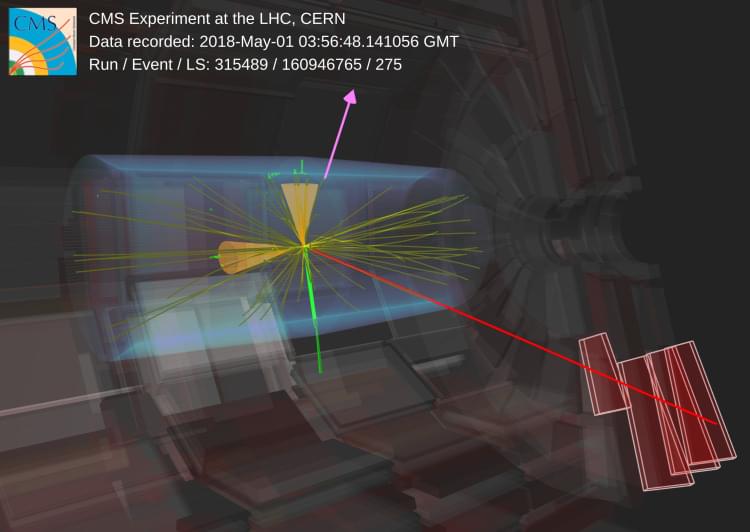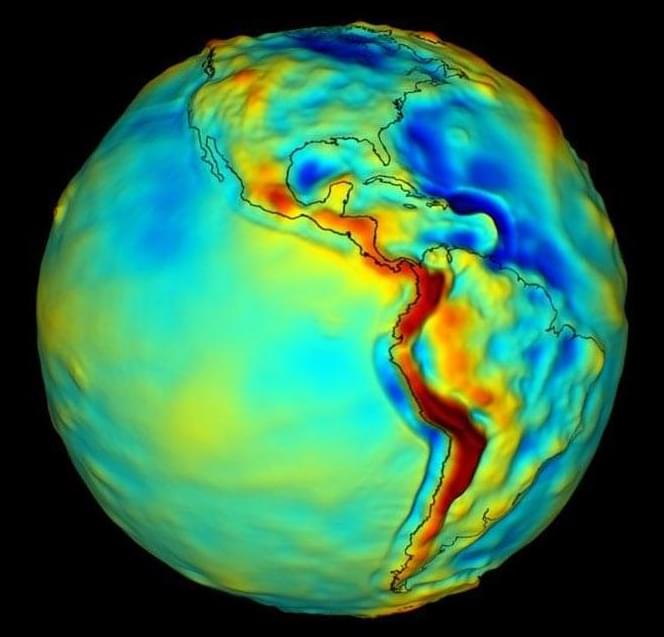Spintronics researchers discovered a new mechanism to generate strong spin currents that could bring us a step closer to low-power, high-performance memory and processors.
Category: particle physics – Page 4
Why matter dominates over antimatter in our universe has long been a major cosmic mystery to physicists. A new finding by the world’s largest particle collider has revealed a clue.
“In solid matter, heat is transferred both by mobile charge carriers and by vibrations of the atoms in the crystal lattice,” Garmroudi says, emphasizing that researchers have devised advanced techniques to engineer thermoelectric materials with exceptionally low thermal conductivity over the past few decades.
“In thermoelectric materials, we mainly try to suppress heat transport through the lattice vibrations, as they do not contribute to energy conversion,” he adds.
Garmroudi recalls developing the novel hybrid materials during his research stay in Tsukuba, Japan, supported by the Lions Award and carried out at the National Institute for Materials Science as part of his work at TU Wien (Vienna University of Technology).
Quantum gravity is one of the biggest unresolved and challenging problems in physics, as it seeks to reconcile quantum mechanics, which governs the microscopic world, and general relativity, which describes the macroscopic world of gravity and space-time.
Efforts to understand quantum gravity have been focused almost entirely at the theoretical level, but Monika Schleier-Smith at Stanford University has been exploring a novel experimental approach — trying to create quantum gravity from scratch. Using laser-cooled clouds of atoms, she is testing the idea that gravity might be an emergent phenomenon arising from quantum entanglement.
In this episode of The Joy of Why podcast, Schleier-Smith discusses the thinking behind what she admits is a high-risk, high-reward approach, and how her experiments could provide important insights about entanglement and quantum mechanical systems even if the end goal of simulating quantum gravity is never achieved.
The CMS collaboration at CERN has observed an unexpected feature in data produced by the Large Hadron Collider (LHC), which could point to the existence of the smallest composite particle yet observed. The result, reported at the Rencontres de Moriond conference in the Italian Alps this week, suggests that top quarks – the heaviest and shortest lived of all the elementary particles – can momentarily pair up with their antimatter counterparts to produce an object called toponium. Other explanations cannot be ruled out, however, as the existence of toponium was thought too difficult to verify at the LHC, and the result will need to be further scrutinised by CMS’s sister experiment, ATLAS.
High-energy collisions between protons at the LHC routinely produce top quark–antiquark pairs (tt-bar). Measuring the probability, or cross section, of tt-bar production is both an important test of the Standard Model of particle physics and a powerful way to search for the existence of new particles that are not described by the 50-year-old theory. Many of the open questions in particle physics, such as the nature of dark matter, motivate the search for new particles that may be too heavy to have been produced in experiments so far.
CMS researchers were analysing a large sample of tt-bar production data collected in 2016–2018 to search for new types of Higgs bosons when they spotted something unusual. Additional Higgs-like particles are predicted in many extensions of the Standard Model. If they exist, such particles are expected to interact most strongly with the singularly massive top quark, which weighs in at 184 times the mass of the proton. And if they are massive enough to decay into a top quark–antiquark pair, this should dominate the way they decay inside detectors, with the two massive quarks splintering into “jets” of particles.
Traditionally, magnetic materials have been divided into two main categories: ferromagnets and antiferromagnets. Over the past few years, however, physicists have uncovered the existence of altermagnets, a new type of magnetic material that exhibits features of both antiferromagnets and ferromagnets.
Altermagnets are magnetic materials that have no net magnetization (i.e., their atomic magnetic moments cancel each other out), like antiferromagnets. Yet they also break spin degeneracy (i.e., the usual energy equality between spin-up and spin-down electrons), similarly to ferromagnets.
Researchers at Songshan Lake Materials Laboratory, Southern University of Science and Technology, the Hong Kong University of Science and Technology and other institutes in China recently set out to realize a layered altermagnet that can generate non-collinear spin current. The room-temperature metallic altermagnet they unveiled was outlined in a paper published in Nature Physics.
Ink engineering approach boosts efficiency and cuts cost of quantum dot-based photovoltaics
Posted in chemistry, engineering, particle physics, quantum physics, solar power, sustainability | Leave a Comment on Ink engineering approach boosts efficiency and cuts cost of quantum dot-based photovoltaics
Colloidal quantum dots (CQDs) are tiny semiconductor particles that are just a few nanometers in size, which are synthesized in a liquid solution (i.e., colloid). These single-crystal particles, created by breaking down bulk materials via chemical and physical processes, have proved to be promising for the development of photovoltaic (PV) technologies.
Quantum dot-based PVs could have various advantages, including a tunable bandgap, greater flexibility and solution processing. However, quantum dot-based solar cells developed so far have been found to have significant limitations, including lower efficiencies than conventional silicon-based cells and high manufacturing costs, due to the expensive processes required to synthesize conductive CQD films.
Researchers at Soochow University in China, the University of Electro-Communications in Japan and other institutes worldwide recently introduced a new method that could potentially help to improve the efficiencies of quantum-dot based photovoltaics, while also lowering their manufacturing costs. Their proposed approach, outlined in a paper published in Nature Energy, entails the engineering of lead sulfide (PbS) CQD inks used to print films for solar cells.
NASA and partners are building the first quantum gravity sensor for space, a breakthrough instrument that uses ultra-cold atoms to detect tiny shifts in Earth’s gravity from orbit. With potential applications ranging from mapping hidden aquifers to exploring distant planets, this compact, highly
The NFI opened its eye to the sky first on April 14, imaging the Sun against the background stars of the constellation Pisces. The view here has been specifically filtered to bring out those background stars, which are otherwise blotted out by the bright zodiacal light generated by sunlight glinting off dust particles in the inner solar system. Also visible is a sliver of the Sun’s corona at center, reminiscent of the view during an annular solar eclipse.
You might notice several strange, streaky crescent-shaped artifacts at right. These arise from a small misalignment between the imager and the Sun, allowing stray sunlight to glint off the optics where it’s not quite blocked by the coronagraph. Engineers will use this and subsequent images to adjust the NFI’s position on the sky to bring it in full alignment with our star and eliminate stray light in future scientific data. Ultimately, that calibration will allow just one percent of the corona’s light through to the imager, providing clear views of faint structures and changes within the corona as the Sun spews material out into space.
Two days later, on April 16, the three WFIs got their first look at the Sun, taking in a broad view across the solar system. These instruments are designed to look at the region of space out to some 45° from the Sun’s position, roughly out to the distance of Earth’s orbit projected on the sky. Their fields of view don’t overlap, but instead form a trefoil pattern that rotates over time.
Decades of research into plasma wakefield acceleration are showing real-world promise for building compact, high-energy particle colliders.









